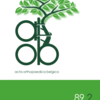Treatment and outcome of AO/OTA type C distal radius fractures: 12 199 fractures from the Swedish Fracture Register
Distal radius fracture, Epidemiology, Swedish fracture register, AO/OTA type C, patient-reported outcome measures
Published online: Aug 12 2023
Abstract
The aim of this study was to examine the epidemiology, treatment, and patient-reported outcome of AO/OTA type C distal radius fractures (DRF) using data from a large national fracture register. We used prospectively collected data from the Swedish Fracture Register covering all AO/OTA type C DRFs registered between April 2012 and December 2018. Data on fracture type, epidemiology, trauma-mechanism, and treatment had been recorded by the treating physician. Patients had been sent an outcome questionnaire including EQ-VAS, EQ-5D, and the SMFA at the time of injury and 12 months after. A total of 12 199 cases with AO/OTA type C fracture were identified. AO/OTA type C1 fracture was most common, with 5400 cases, followed by AO type C2 with 4304 and AO/OTA type C3 with 2495. Cast treatment and surgical treatment with volar locking plate fixation were the most common treatments. Patient-reported outcome measures worsened significantly one year after the fracture, and 56% reported moderate problems with pain and discomfort one year after the fracture. Patients treated with a volar plate reported a significantly larger deterioration in EQ-5D outcome compared to patients treated with a cast. No treatment method was found to be superior. A good outcome after a type C fracture is possible, but many patients do not recover completely. Our findings indicate a relatively better self-reported outcome for patients treated with a cast, but as treatment was not randomized the clinical relevance is unclear.
